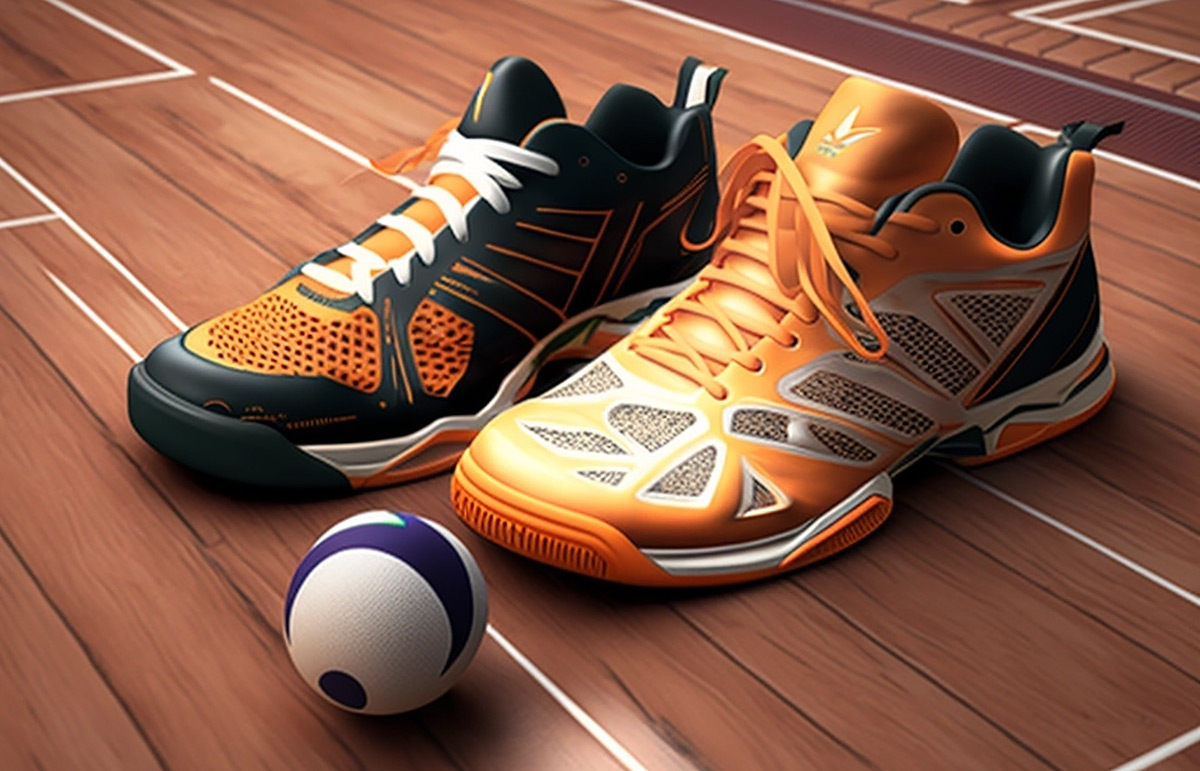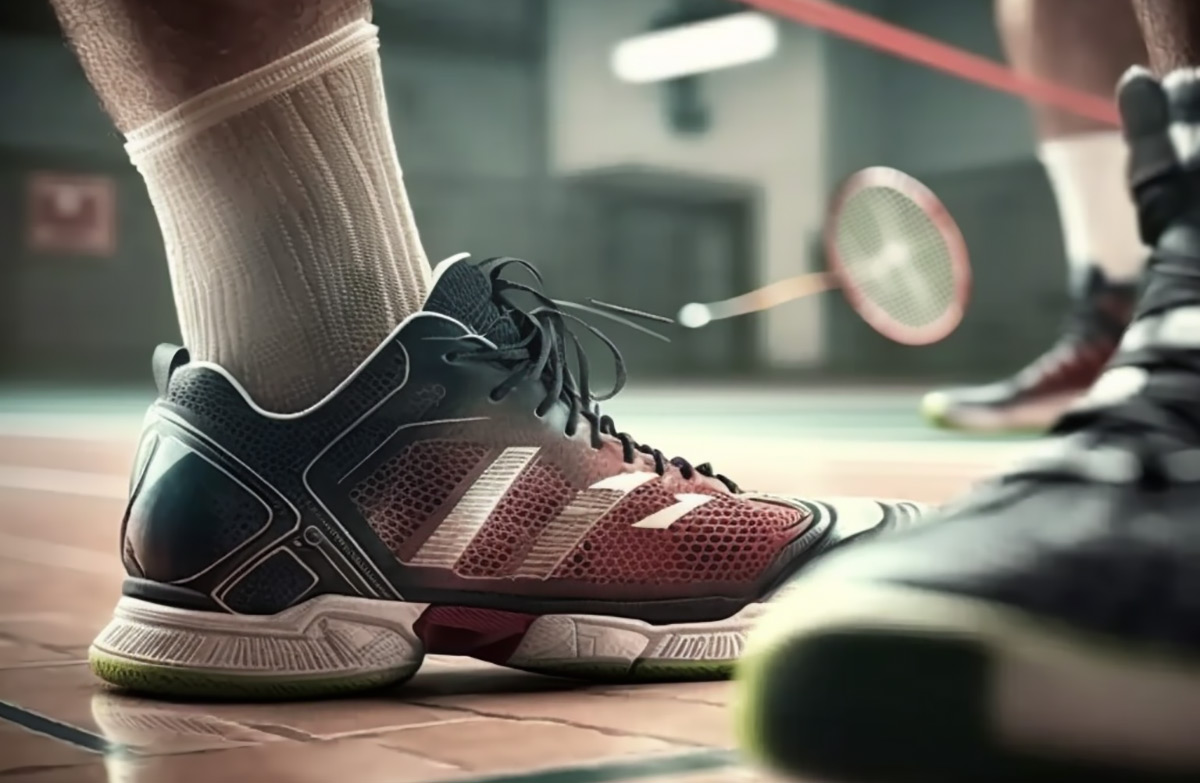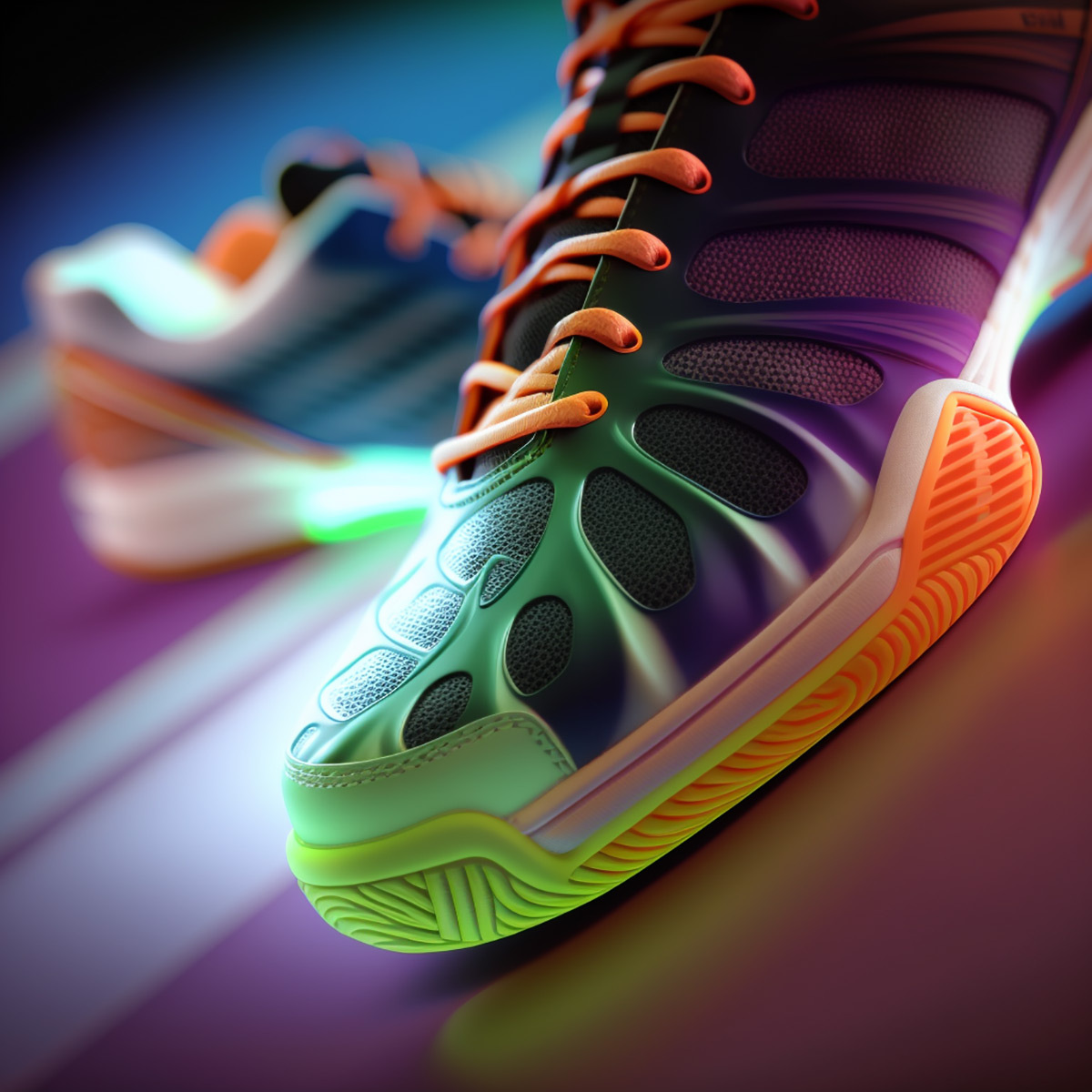Not all shoes are created equal, and there are key characteristics to look for when selecting badminton shoes. Breathability is one of the most vital characteristics. This article will explore the significance of ventilation in badminton shoes and why it affects court performance.
What are badminton shoes?
Badminton shoes are specialist athletic footwear created specifically for the sport. In terms of their design, materials, and performance characteristics, they differ from standard sneakers, sports shoes and running shoes. Badminton shoes are designed to enhance traction, stability, and support during the swift lateral movements hops and stops typical of the sport. Typically, they have non-marking rubber soles that provide superior traction on the court without leaving scuff marks. Moreover, badminton shoes are lightweight and flexible, helping players to move quickly and efficiently on the court.
Importance of wearing proper badminton shoes
It is vital for a player's overall performance and safety that they wear the appropriate badminton shoes. These are some justifications:1. Provides better traction - Due to their non-marking rubber soles, badminton shoes are designed to offer improved traction on the court. This permits badminton players to move rapidly and effectively without slipping or losing their balance, hence lowering the danger of injury.
2. Offers better support and stability: Badminton contains several lateral movements, hops, and stops, which can place significant stress on the feet and ankles. Correct badminton footwear provides enhanced support and stability to the feet, ankles, and lower legs, hence lowering the chance of sprains, twists, and other injuries.
3. Enhances performance: The purpose of badminton shoes is to improve a player's performance on the court by improving their grip, agility, and control. They are lightweight, flexible, and responsive, allowing for fast movement and direction changes.
4. Prevents foot problems: Prevents foot issues Badminton shoes are meant to avoid foot issues such as blisters, calluses, and fungal infections. They are constructed from breathable fabrics that allow air to circulate throughout the shoe, keeping the foot cool and dry and reducing the development of sweat and stink.
5. Complies with the laws of the game: Lastly, badminton shoes are necessary by the rules of the badminton game. The International Badminton Federation (IBF) requires players to wear shoes with non-marking soles that are made especially for badminton.
Features of Badminton Shoes
Badminton shoes are built expressly for the demands of the sport. These are some distinguishing characteristics:
1. Non-marking rubber soles: Badminton shoes feature non-marking rubber soles that improve traction without leaving scuff traces on the court. Non marking shoes enable athletes to move rapidly and stop abruptly without losing their balance.
2. Lightweight and flexible: Badminton shoes are meant to be lightweight and flexible, enabling players to move swiftly and change directions without difficulty. This feature facilitates players' mobility and agility on the court.
3. Breathable materials: Materials that are breathable include mesh, synthetic leather, and microfiber. These materials allow air to circulate throughout the shoe, keeping the foot cool and dry and reducing the accumulation of sweat and stink.
4. Cushioning and shock absorption: Badminton shoes feature good cushioning and shock-absorbing materials like EVA foam or gel insoles. This reduces the impact of hops and rapid stops, protecting the feet and joints.
5. Ankle support: The ankle support of badminton shoes is superior to that of conventional sneakers. They have a higher cut that wraps over the ankle, offering greater support and stability during lateral movements and jumps.
6. Durability: Badminton shoes are constructed to endure the demands of the sport. They are constructed from durable materials and have reinforced wear-prone areas such as the toe box and heel counter.

Roles of Ventilation in Badminton Shoes
Ventilation is an essential component of badminton shoes that contributes significantly to the shoes' comfort, performance, and durability. Listed below are several explanations of the function of ventilation in badminton shoes:
1. Temperature Regulation: During badminton, players frequently needed to move swiftly across the court, forcing their feet to generate heat and sweat. Ventilation in badminton shoes allows heat and moisture to escape, hence regulating the temperature inside the shoe. This prevents blisters, foot odour, and fungal diseases by keeping the feet cool and dry during play.
2. Comfort: Adequate ventilation in badminton shoes ensures that the player's feet remain comfortable during the entire game. Ventilation prevents the feet from overheating, which can cause discomfort and decrease performance, by enabling air to circulate within the shoe.
3. Performance: Badminton shoes with enough ventilation improve a player's performance by keeping their feet dry and comfortable. Players can move around the court quickly and effectively when their feet are cool and dry because their socks and shoes won't be slowing them down.
4. Durability: Adequate ventilation in badminton shoes extends their lifespan by reducing the buildup of moisture, which can promote the growth of bacteria and fungi. Moisture can weaken the shoe's materials over time, causing them to degrade and disintegrate.
Breathable Material for Badminton Shoes
Manufacturers of breathable badminton shoes typically use a combination of materials that offer appropriate ventilation without sacrificing durability or support. Here are some popular materials used to make badminton shoes that are breathable:1. Mesh: Mesh is a popular material for breathable badminton shoes due to its lightweight and breathable properties. It enables free air circulation within the shoe, keeping the foot cool and dry. Moreover, the mesh is resilient and can resist continuous use and wear. Different brands give different names to this like Durable Russel Mesh, Multi-layer Mesh and so on.
2. Synthetic Leather: Synthetic leather is frequently used in the upper portion of badminton shoes to offer structure and stability. Moreover, it is lightweight and breathable, preventing moisture buildup inside the shoe.
3. Nylon: The inner of badminton shoes is often made from nylon, a durable and lightweight material. It is breathable, preventing the feet from overheating and sweating while playing.
4. EVA foam: EVA foam is a regularly used cushioning ingredient in the midsole of badminton shoes. It is lightweight and offers exceptional shock absorption, thereby protecting the feet when you are playing.
5. Rubber: Rubber is frequently used to construct the soles of badminton shoes because it gives exceptional grip and traction on the court. It is also durable and resistant to regular use and wear.

Factors Affecting Breathability in Badminton Shoes
A number of variables can affect the breathability of badminton shoes, including:
1. Design: The design of a badminton shoe is a major factor in influencing its breathability. The feet will remain cool and dry when wearing shoes with a well-ventilated upper, mesh lining, and a breathable midsole.
2. Materials: The materials used to construct badminton shoes might also impact their breathability. Shoes made of lightweight and breathable materials like mesh, synthetic leather, and nylon will allow air to travel freely; however, shoes made of heavier materials like leather may block airflow.
3: Fit: Fit can also affect the breathability of badminton shoes. Shoes that are too tight or too loose may impede air circulation, but shoes that fit properly will allow air to flow easily.
4: Socks: The socks worn with badminton shoes can also affect their breathability. Socks that are lightweight and breathable will allow air to move freely, as opposed to socks that are thick but provide more cushioning.
5: Climate: The temperature in which a badminton player is competing might also affect the breathability of their shoes. Playing badminton in hot and humid situations will necessitate shoes with enhanced ventilation, whilst playing in colder conditions may necessitate shoes with diminished ventilation.
Effects of non-breathable badminton shoes on Performance
Badminton shoes that are not breathable can hinder a player's performance on the court. Here are some of the consequences of wearing shoes that do not breathe:
1. Discomfort: Non-breathable shoes can trap heat and moisture within, resulting in a wet and unpleasant environment for the foot. This might result in distraction and discomfort, making it more difficult for players to concentrate on the game.
2. Reduced Agility: Decreased Agility: Shoes that are not breathable can be heavy and rigid, inhibiting the natural movement of the foot and decreasing agility on the court. This may result in a delayed reaction time and a diminished capacity for fast spins and jumps.
3. Fatigue: Non-breathable footwear can cause the foot to overheat, resulting in tiredness and decreased stamina during extended games. This can have an effect on a player's performance, making it more difficult to retain energy and concentration throughout the match.
4: Increased Risk of Injury: Due to the buildup of moisture and friction, non-breathable shoes can cause blisters, calluses, and other foot ailments. This can result in pain, discomfort, and an increased risk of more serious injuries, such as sprains and strains.
5. Shorter Lifespan: The materials of non-breathable shoes are more prone to harm from moisture and sweat, resulting in a shorter lifespan. This may necessitate more regular shoe replacement, which can be expensive and difficult for players.

Impact of badminton shoes on foot health
It is impossible to emphasise the effect badminton shoes have on foot health. Improper footwear can cause a variety of foot issues and even severe injuries.
One of the most important factors to take into account when buying badminton shoes is the level of support they offer. Common foot issues, such as plantar fasciitis and shin splints, can be avoided by wearing shoes with enough arch support and padding.
Furthermore, breathability is essential for foot health. Poorly ventilated footwear can create excessive foot perspiration, leading to fungus infections and unpleasant odours. Conversely, footwear with breathable uppers and linings can assist in keeping the feet dry and healthy.
Another essential factor is the fit of the shoes. Too-tight shoes can cause blisters and other friction-related ailments, whereas too-loose shoes can allow the foot to slide around inside the shoe, leading to instability and possible ankle injuries.
In addition to these considerations, it is essential to select footwear that is suitable for your foot type and any unique foot ailments you may have. Those with flat feet, for example, may require shoes with greater arch support, while those with high arches may benefit from shoes with more cushioning.
Consider aspects such as support, fit, and foot type to select the most suitable pair of badminton shoes for your needs. With the proper footwear, you can increase your performance on the court and maintain the health of your feet.
Hence, when buying your next pair of shoes, either non-branded or branded, like Yonex or Nivia badminton shoes, don't overlook the significance of breathability. Like badminton rackets, badminton shoes are also crucial equipment for the badminton game. Select wisely and reap the benefits of a ventilated shoe.
Your email address cannot be published. Required fields are marked*

 My Account
My Account Track Order
Track Order Sports Guide
Sports Guide